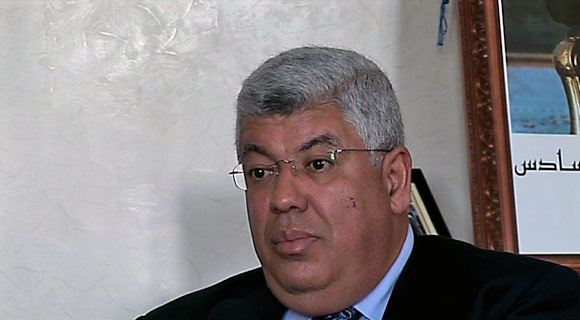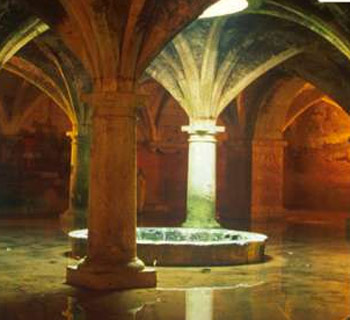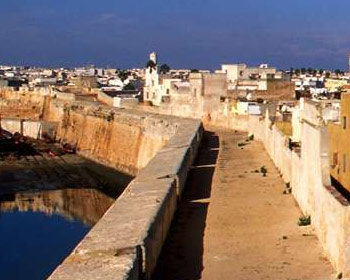Invest in Doukkala-Abda Region Morocco
Regional Investment Centre of Doukkala-Abda, Directort, Mohammed Lemrabet
In terms of energy, the region has a huge thermal power station that produces 43% of the country’s energy – and will soon produce 63% of the country’s energy with the creation of 2 new units.
Interview with Mohammed Lemrabet, Director of Regional Investment Centre of Doukkala-Abda

What are the main characteristics of the region of Doukkala-Abda?
Doukkala-Abda is a central region in Morocco. It spans 1.87% of the Moroccan soil. It has more than 2 200 000 inhabitants. It is divided into 4 administrative regions and the administrative center is the big city of Safi. It is located near Casablanca, Morocco’s first economic hub. The region has a 300km long coast and is well-served: there are 4 ports, and a project for a new mineral port near Safi is under way and should be finished by 2015. It is also well-served by an important road network, with 3376 existing roads and 2 projects for 2015: 1) a highway connecting El Jadida (within the region) to Casablanca; 2) a highway connecting El Jadida to Safi. We are 1 hour away from the airport of Casablanca, 2 hours away from the airport of Marrakech, and 2.5 hours away from the airport of Essaouira.
In terms of energy, the region has a huge thermal power station that produces 43% of the country’s energy – and will soon produce 63% of the country’s energy with the creation of 2 new units.
The backcountry is very active in terms of agriculture, with almost 96 000 hectares of irrigated land within Doukkala only; and 120 000 hectares of irrigated land within the whole region. The rural population is very important.
The region has very important mines of phosphate, baryte, gypsum and salt. The top economic actor in this field is the OCP (Office chérifien des phosphates). They have transformation units in El Jadida and Safi. The products are then shipped to the main trade ports.
All of the government’s national action plans apply to our region. The Green Plan applies more to Sidi Ben Nour, the Plan Azur applies more to Jedida. The Cruise City project is in Safi. The Plan Emergence concerns big industrial hubs such as Morocco’s biggest industrial park (500 ha) dedicated to phosphate. A project of an integrated industrial platform in Safi is under way, specialised in chemistry and parachemistry. It is expected to open in 2015-2016. Our region is a pioneer in this field. We are considered the 2nd industrial hub after Casablanca.
There are 4 ports in the region and fishing is an important sector. Safi has long been considered the capital of sardine. They have migrated to the south which caused a slight decrease in production. But there are a lot of other species of high quality: white hake, seafood, shrimps, langoustine, etc. Our region has a lot of lagoons and mangrove, where we produce farmed oyster and clam, and particularly mussel.
Craft (pottery, wrought iron, embroidery, tapestry work) is a sector that employs an important part of the population. As this sector is developing, we are planning to create special seals of approval for the region’s craft products. We are also working on improving the working tools and infrastructure in this sector with a view to export craft products.
The CRI tries to attract investment in specific sectors. What are these sectors, given the region’s potential and specific needs?
You need to know that every Regional Center for Investment (CRI) is different. The CRI of Doukkala Abda is special in that it is in charge of 4 prefectures. Besides, its strategy is very aggressive in the region, and it has attracted numerous investors. However, despite the region’s great potential, it isn’t valued enough by investors, as they usually prefer the country’s big cities: Marrakech, Casablanca, etc. The CRI’s role is to decentralise investment. For example, we have worked on the opening of branches of certain supermarkets in the region. The same goes for tourism operators.
Our CRI is ISO certified. We have taken measures in order to facilitate the creation of new businesses. A business can now be started in 24 hours and a body corporate can be created in 48 hours.
We have created platforms in the region that are in need of investment. For example, the industrial park of Jorf Lasfar is ready to welcome important firms. So is the phosphate hub directed by the OCP.
In terms of energy, the region has a huge thermal power station that produces 43% of the country’s energy – and will soon produce 63% of the country’s energy with the creation of 2 new units. This is obviously a strategic place for investment. We have plans to build another thermal power station in Safi. Construction will start in 2012. The region will thus become the country’s top electricity-producing region. Any investor involved with energy and renewable energy is welcome. Windmill energy is important in the region. Theolia has detected important potential for windmill energy in the region and is interested in acquiring 600 ha.
The potential for tourism is also important. The coast spans 300km, and offers amazing sites for tourists. A 1328 ha area is dedicated to tourism investors, and only 300 ha have been purchased so far. It is our mission to help and accompany investors interested in this area.
Government policies are important in the region, with 96 projects under way as part of the Green Plan. The Plan Emergence includes the industrial park and other industrial zones. Big firms have come to the region, such as Sonasid (ironworks). The new park can host that type of activity too.
Why should investors choose your region over big cities such as Casablanca?
I think we have all the advantages Casablanca has, but we don’t have its drawbacks. We are 100km away from the airport: it is faster to come to El Jadida than to go to Casablanca! The future belongs to El Jadida. A lot of resources have been and are being invested in the sectors of energy, industry, agriculture…
You know, before investing in a project, an investor does a feasibility survey, and takes a decision accordingly. For example, when Marjane offered Auchan to open a branch in the region, they refused. They said there was no point opening a branch in such small cities – only big cities are interesting. For us, it was an opportunity to create jobs in the region, but it wasn’t profitable enough for Auchan. In the city of Casablanca only, there are 6 million consumers; in Doukkala Abda, there are 2.2 million consumers in the entire region. There are 180 000 inhabitants in El Jadida. For this reason, based on potential surveys, investors choose big cities.
But I maintain that El Jadida has a bright future. The suvey also includes the cost of land, the workforce cost, etc. As the region’s potential hasn’t been exploited yet, these variables are much more attractive here than in big cities. Besides, big cities were hit by the world crisis, whereas the region of Doukkala-Abda wasn’t affected by it. The proof is that the business creation rate in the region hasn’t decreased.
Many countries of the Arab world are currently subject to political unrest and protests. Morocco is a different case, however some people might get confused. Tourism has actually decreased in Morocco already. What would you like to say about that?
Some people from the West can’t find Morocco on a map. These can get confused. But Morocco is extremely different to other Arab countries. First of all, we love our king. He has started to work for the country’s development right after his accession to the throne. The reforms he has implemented made Moroccans trust him. Both education and investment are motivated by these reforms.
The difficulties we’ve encountered are linked with the financial crises more than the political crisis. Investment was boosted by FDI (foreign direct investment); as soon as this decreased, our economy was slightly affected, but Moroccan public and private investment hasn’t decreased. The same goes for businesses: the small and medium enterprises creation rate hasn’t changed.
Morocco isn’t concerned by the political unrest that other countries are facing. The youth are free to express themselves and the government listens to them. For example, the INDH (National Initiative for Human Development) has promoted projects in every province of the country to fight poverty, failure at school and other social problems. These measures were taken in 2005, way before the Arab world crisis started! The government has also taken measures against unemployment, which is an important factor of the political unrest in these countries. Our unemployment rate (9.2%) is similar to that of France, for example. The few protests that have taken place here don’t bare comparison with what is happening in other countries of the Arab world and I really don’t think it is a threat for Morocco.
What is your dream for the region of Doukkala Abda in 5 years?
The CRI was created to promote and accompany investment, and exploit the region’s potential. The CRI plays an active part in the region’s development. We hope for the CRI to become the driving force behind this development.